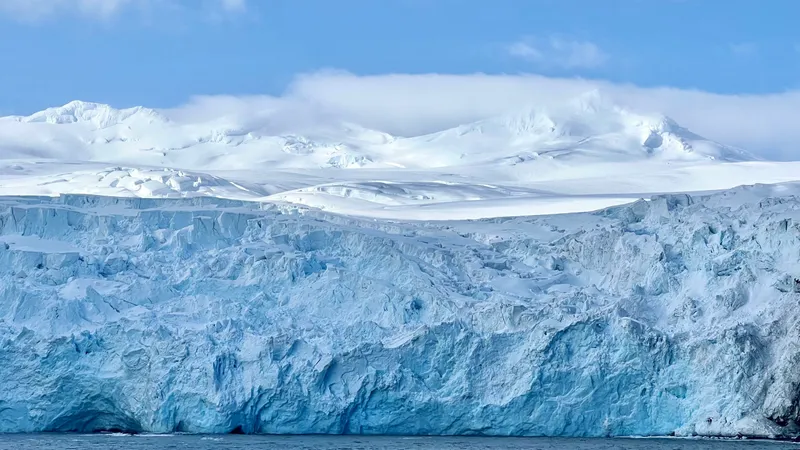Traveling to Antarctica is an awe-inspiring experience. The sole anticipation of visiting the frozen continent is full of excitement, but it also comes with a daunting list of questions. It is essential to be well prepared for this extreme environment.
We have gained extensive experience insights from our adventure to Antarctica. Additionally, through interactions with fellow travelers, we have identified the most common questions that people have about traveling to the most remote continent on Earth.
1. Is it safe to cruise to Antarctica?
The same wanders that make Antarctica a life-changing experience also create specific risks and challenges. Cruising to Antarctica is generally safe, and major incidents are rare. The ships that go to Antarctica have been specially designed and have ranking known as “ice classes”. Travelers’ safety is not at much risk due to the ship itself but to other factors that are specific to the frozen continent:
- Extreme weather conditions: weather in Antarctica is harsh and can change very rapidly. The crew that goes on the frozen continent is a team of specially trained professionals that follow strict safety measures. In case of a sudden weather change, the crew communicate between them and have special warning signs in order to bring every traveler aboard the ship ASAP.
- Isolation and limited facilities: what makes Antarctica beautiful also makes it dangerous. In case of medical emergencies, access to proper medical care can be delayed. There is a medical center on the ship, but it can’t be compared to a hospital.
- Icebergs and falling glacier edges: the waters of Antarctica are full of icebergs. While the risk they pose to the cruise ship is small, they pose a greater risks to zodiacs. If an iceberg tilts, or a glacier edge falls into the water, some huge waves will be produced. The crew will always keep a safe distance from such dangers, but this risk can never be eliminated.
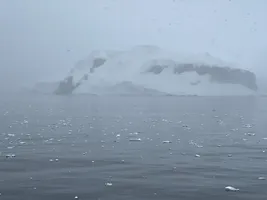
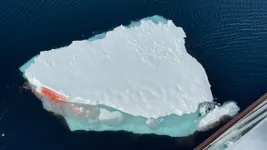
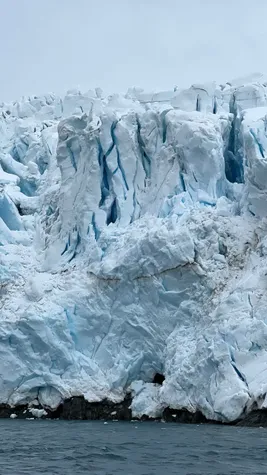
2. What is the best time to go to Antarctica?
The best time to visit Antarctica is during the summer season between December and February. This is the time when the weather becomes less harsh and the wildlife more active. In the summer months, the temperature is regularly above the freezing level, and the days are longer.
We’ve traveled to Antarctica between the months of December and January, and if we were to go again, we would choose January, somewhere in the middle of the month toward the end. The challenges we faced in December were:
- too much ice at some landing zones which made them inaccessible.
- the weather could have been better overall.
- too much snow for penguins to lay their eggs.
3. What should I pack for an expedition in Antarctica?
I can’t emphasise enough that Antarctica is the most remote continent, and it has very limited facilities. What you don’t take with you, you won’t be able to get there. This topic is so important that we dedicated an entire article to it. We have a checklist with the Antarctica packing essentials, and we also explain each of them in detail.
 Travelfoss
Travelfoss
4. What wildlife can I expect to see during a cruise in Antarctica?
During your cruise in Antarctica you can expect to encounter a diverse range of wildlife, including birds, penguins, seals, dolphins, and whales. It may not sound like much, but there are so many different species of penguins, and they live in huge colonies. Antarctica is also a heaven for various species of birds, with the most impressive being the albatrosses. The Wandering Albatross has the largest wingspan of any bird.
Remember that Antarctica is a delicate ecosystem. While we cherish our visit to the travel continent, it is also our responsibility to minimize our impact on the environment. Observing wildlife in its natural habitat is unforgettable, but we need to keep our distance and respect the animals. Part of respecting the animals is to respect the environment. Try not to leave any trace, especially holes in the snow. In case you step on deep snow, and your foot leaves a hole in the snow, cover it up. If a penguin falls in a hole in the snow, it might not be able to get out, and will eventually die.
5. How rough are the seas during a cruise to Antarctica?
The most notorious leg of the journey to Antarctica is the Drake Passage, which lies between the southern tip of South America and the Antarctic Peninsula. It is the place where the Pacific, Atlantic and Southern Oceans converge forming strong currents and winds. This creates large swells and rough seas.
The conditions on the Drake Passage can vary, but travelers need to be prepared for sea sickness. Even people that think of themselves less prone to sea sickness will be affected on a rough day. Our passage towards Antarctica was a bit rough, but not bad, while our return from Antarctica was relatively calm. Personally, I do have sea sickness, but I only took some light pills because I wanted to avoid the side effects of stronger pills. On our way to Antarctica, I’ve been lying in bed for an entire day, barely being able to eat something, while the return was relatively okay. During the Drake Passage crossing, stronger sea sickness medication is advisable if you know yourself to be at risk of vomiting or more sever symptoms.
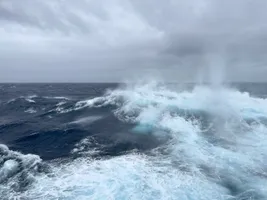
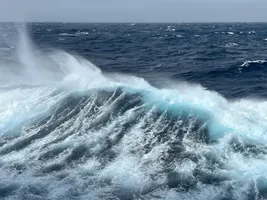
Once you reach the Antarctic Peninsula, the ship is sheltered by bays which makes the cruise calm and tranquil. Here you can enjoy the stunning scenery without worrying about sea sickness.
6. Will I be able to set foot on Antarctica during the cruise?
Yes! Most Antarctica cruises offer the opportunity for passenger to se foot on the frozen continent. After all, this is the highlight of the journey for many travelers to Antarctica. However, the specific landing sites and the number of landing opportunities vary greatly depending on the itinerary, weather conditions, and regulations that limit the number of people at each landing site to minimize disturbances to the environment and wildlife. We wrote a dedicated travel article about landings on Antarctica that you might be interested in:
 Travelfoss
Travelfoss
7. Do I need a visa or special permit to visit Antarctica?
No country owns Antarctica, and therefore a vis is not required. However, you typically need a special permit to visit Antarctica. The Antarctica cruising company is nearly always responsible of obtaining the necessary permits for all its passengers, including yours.
8. Are there any age restrictions for Antarctica cruises?
Yes, there are age restrictions for Antarctica cruises, and they can vary depending on the cruising company. Once aboard the ship to Antarctica, additional age restrictions might apply to certain activities such as kayaking.
- minimum age: Many cruising companies have a minimum age requirement typically around 8 to 12 years old. Younger children might not be allowed due to safety concerns and the demanding conditions of the journey.
- physical fitness: The fitness level of the passenger is more important than the age. Some activities like kayaking may require people to meet certain criteria.
- pregnancy: Depending on the cruising operator that you are traveling with, additional restrictions might apply. Some companies require women to not be more than 3 months pregnant at the moment of the cruise.
In the end, these restrictions depend entirely on the cruise operator you are traveling to Antarctica with. If you think you might be affected by any of there restrictions, it is a good idea to talk to the cruise operator and seek their advice.
9. How far in advance should I book my cruise to Antarctica?
The sooner you book, the better the options you have. Ideally it is to book 12 to 18 months ahead. Due to the high demand, and limited availability due to the short season and strict regulations, cruises to Antarctica tend to book quickly. You may still be able to find some last minute deals, but you won’t be able to get the best selection of itineraries, best travel dates, ship or cabin type.
We personally booked 10 months in advance, and the ship we wanted (National Geographic Resolution) was sold-out. When cruising to Antarctica, the cabin’s location is important if you want to minimize your sea sickness. Booking a cabin in the middle of the ship, both vertically and horizontally is ideal, but these spots tend to be sold first. If you want to grab such a cabin, then you should look to book well in advance.
10. Are there any environmental guidelines to follow while in Antarctica?
Visiting Antarctica comes with significant responsibilities to protect the frozen continent and the wildlife that lives here. There is a set of strict regulations in place that have been established and enforced by the Antarctic Treaty System.
- Biosecurity: Make sure you wash every piece of used outdoor equipment and clothing that you take with you to Antarctica. This includes boots, gloves, and others. The crew on the ship will make a special event before reaching Antarctica in order to have everyone’s gear checked out. Additionally, before each landing people are required to step with their boots in a biocide to kill any potential organism before stepping on the frozen continent. The purpose of the biosecurity measures is to prevent the introduction of foreign species in Antarctica.
- No Litter: visitors are required to bring back with them all their waste. Littering or leaving any waste on the continent is prohibited.
- Stay on Trails: During landings, the travelers are requested to follow a certain trail in order to not disturb wildlife or any type of fragile vegetation.
- Keep the Distance: Avoid causing unnecessary stress on the animals by maintaining a safe and respectful distance from wildlife.
- Limiting Human Presence: There are regulations in place that limit the number of people that can set foot on land at each landing zone to 100. The purpose is to minimize the cumulative impact of human visitors on the environment.
11. Will I see the Southern Lights - Aurora Australis in Antarctica?
It never dawned on us that we might see the Southern Lights, but we met a lot of fellow travelers talking about this. We have many articles covering the false Northern Light on Travelfoss, and the phenomena is basically the same. One of the most important requirements for someone to see the Southern or Northern Lights is to have a dark sky. Since cruises to Antarctica are done during the summer season, the days are long, and the night non-existent. The sky doesn’t get dark enough in Antarctica during the summer months for people to see the Southern Lights.
The Southern Lights do appear in Antarctica, but in the winter months from March to October, when no tourist cruise will go there anymore.
12. Will I cross the Antarctic Circle?
The Antarctic Peninsula cruises provide an incredible experience, but for many travelers, crossing the Antarctic Circle is a significant milestone. Whether or not you will cross the Antarctic Circle depends on the specific itinerary of the cruise you book, the duration of the trip, the weather conditions and ice, and the departure point of the cruise.
Keep in mind, that weather dictates everything in Antarctica. Even if the itinerary includes crossing the Antarctic circle, the harsh weather and the ice barriers may prevent ships from reaching the latitude of the Antarctic Circle. To maximise your chances of less ice barriers, seek to book your trip to Antarctica in the middle or the second half of the Antarctic summer: second half of January.
13. What is the best departure point towards Antarctica?
This is a good question to ask when choosing a cruise to Antarctica. Cruises departing from Ushuaia, Argentina have more time to travel south and might spend more time in the Antarctic region. However, the cruising operator may change, under special circumstances, the departing point after you booked the cruise, and there is nothing you can do about it.
14. What was the weather temperature during your cruise to Antarctica?
The weather temperature in Antarctica varies depending on the time of the year and the location. During the summer months (November, December, January, and February) when cruising companies go to Antarctica, the temperature ranges between -5°C and 5°C (23°F and 41°F). However, keep in mind that the weather in Antarctica is very unpredictable, and it can change very rapidly. We had days with no clouds in the sky and temperatures above 0°C (32°F), but we also had days with snow and temperatures below 0°C (32°F).
15. What is the best camera for Antarctica?
If you are a photography enthusiast, you will want to capture the beauty of Antarctica. For us, it was an iPhone 13 Pro and an iPhone 12 Pro. Most of the time the zoom they have was enough, but I would have preferred a better zoom in certain situations. E.g. photoshooting the wildlife from the ship. There were people on the cruise with professional cameras and lenses, and the quality of their photos was much better however they had to carry a lot of equipment with them.
16. What was the water temperature during the polar plunge?
The water temperature during the polar plunge was 0°C (32°F). The water was freezing cold, but the adrenaline rush was so high that people who did the plunge told us that they didn’t feel the cold. We decided not to do the polar plunge because we read about certain risks that it poses to the body.
Other Questions?
These are the top questions that we had or we encountered before and during our cruise to Antarctica. In case you have any additional questions, don’t hesitate to false contact us and ask whatever it is you want to ask.
We write to help you prepare for your expedition to Antarctica. Good preparation is the key to successful travel. Checkout out our other posts about Antarctica:
 Travelfoss
Travelfoss
Related Travel Articles
- What to Pack for Antarctica Cruise - Complete Packing List
- 7 Unique Travel Destinations for 2024
- How To Choose Your Cruising Company To Antarctica
- What Are The Excursions You Can Do In Antarctica?
- What You Should Expect From Landings In Antarctica
- What You Should Know Before Booking a Cruise to Antarctica
- The Best Expedition Cruises in Antarctica
- What To Expect From Zodiac Cruising In Antarctica
- What You Need To Know About Kayaking in Antarctica
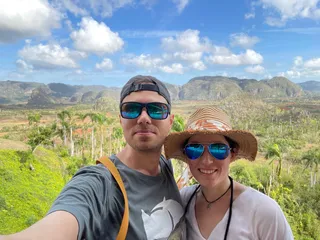
Writing free, independent and personal travel content since 2021. If you appreciate what we do, then you can return the favor by using the affiliate links below.
- Get your accommodations on Booking.com
- Buy your gear and gadgets from Amazon
- Book flights using Expedia
- Book activities on Get Your Guide
- Book guided trips on G Adventures
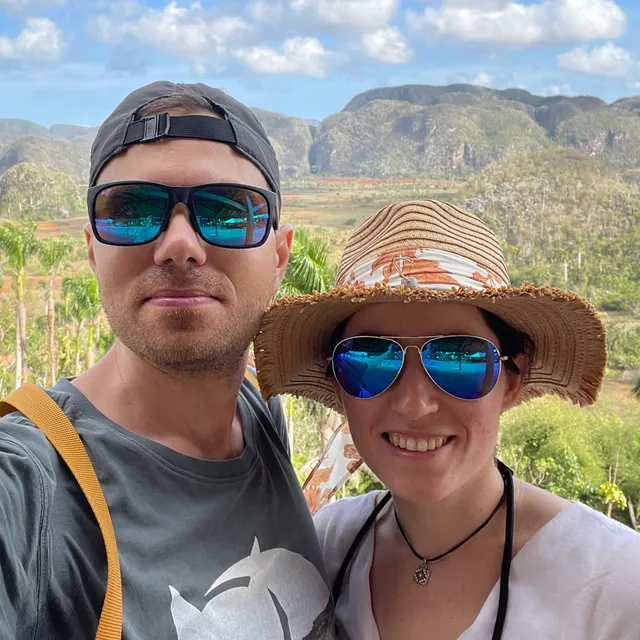
Writing free, independent and personal travel content since 2021. If you appreciate what we do, then you can return the favor by using the affiliate links below with no cost for you.
